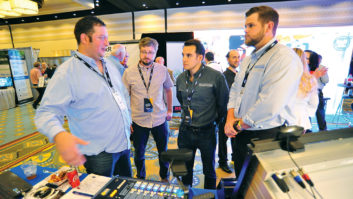U.S. commercial radio revenue declined slightly in 2015, off 1%, continuing a trend of the year prior, according to the RAB. Our industry’s sales from traditional spot and network ads have slowed enough in recent years to approximately offset growth in its web/mobile and off-air efforts.

The Radio Advertising Bureau issued its year-end wrap-up. It started its announcement not with numbers but with a reminder of the industry’s value proposition: “Radio boasts the broadest mass reach among all media while simultaneously affording narrow targeting capabilities through numerous program formats and networks. These powerful attributes combine to make broadcast radio the most efficient, effective vehicle for advertising — and radio’s unparalleled consumer reach through broadcast is increasingly being enhanced by stations’ ability to provide additional reach through both digital platforms and ‘off-air,’ or non-traditional, extensions like events, sponsorships and ticket sales,” it stated.
RAB said U.S. commercial radio last year “held its own in attracting ad dollars within the highly competitive media environment.” The organization highlighted growth in the digital sector, which surpassed $1 billion for the first time; and it said off-air sales grew 11% to exceed the $2 billion mark. “Combined, digital and off-air sectors comprise nearly 1/5 of radio’s total bottom line for the full year 2015,” RAB reported. The off-air piece alone is about 12% of total revenue. (See definitions in last paragraph.)
Growth in those areas didn’t keep radio from posting an overall 1% decline, dragged by the spot segment, down 3%, and network, down 1%. Spot revenue remains the biggest piece of the industry’s sales stream at $13.2 billion.
Total revenue then was $17.37 billion, compared $17.509 billion the prior year. By comparison, in 2005 the industry’s revenue was $21.5 billion, according to RW’s reporting of RAB data at the time. The industry saw big drops in the difficult period at the end of the previous decade; since then the overall revenue meter has generally moved only in a narrow range up or down in recent years even as the individual digital and off-air components have grown, and spot and network have fluctuated.

RAB bases its numbers on analysis from Miller Kaplan Arase LLP.
RAB also said the top five advertiser categories held steady last year, with four adding dollars to radio. See second graphic.
Bureau President Erica Farber sees the 2015 report as evidence that advertiser commitment to radio remains consistent. She was quoted in the announcement saying clients “will find money to try out shiny new vehicles, but they continue to rely on radio’s core ability to reach huge numbers of consumers and motivate them to buy products and services.”
(“Digital” is revenue from websites such as banner ads, tile ads, pop-up ads, streaming advertising, social media derived revenue and search engine marketing; revenue from digital multicast channels is no longer part of that segment but is now under the spot category. “Off-air” is related to gate receipts, signage, concessions, sponsorships, merchandising and print activities.)










